Project details
Skill
Cost
Estimated Time
Creating a custom desk with storage cubbies is a great way to maximize your workspace while keeping your belongings organized. This DIY project combines functionality with style, allowing you to create the exact desk shape you need. In this guide, we’ll walk you through the process of building a desk with ample storage, from planning and materials to construction and customization.
Storage Cubby Construction Overview and Materials
Before diving into the construction process, you need to understand the scope of the project and gather the necessary materials. Here’s what you need to know about the skills you need, the cost, and how much time it will take.
Skill Level Required
We consider this project fairly challenging, with a skill level of 3/5. While it doesn’t require advanced woodworking skills, you’ll need to be comfortable using power tools and have some experience with basic carpentry techniques. As Tom Silva, general contractor for This Old House, notes, “You’ll need to miter the trimwork, and making the hutch’s shelves requires patience and precision. “
Estimated Cost
The cost of materials for this project is approximately $150, assuming you have the tools you need. This estimate includes wood, hardware, paint, and other necessary supplies. Keep in mind that prices may vary depending on your location and the quality of materials you choose.
Time Commitment
You can expect to spend about six hours completing this project. This timeframe includes cutting and assembling all the components, as well as finishing touches like painting and installing hardware. If you’re new to DIY projects, you may want to allow for additional time to ensure each step is completed correctly.
Designing Your Desk With Storage Cubbies
When designing your desk with storage cubbies, you should think about both functionality and aesthetics. This section will guide you through choosing the right dimensions and incorporating effective storage solutions into your design.
Choosing the Right Dimensions
The dimensions of your desk will depend on your available space and personal preferences. For this project, we’ll be working with a desktop that measures 27 by 48 inches. Silva advises, “Choose legs at least 29 inches tall for a comfortable working height. ” If you need a larger workspace, consider using ¾-inch plywood for the desktop or adding support stringers to prevent sagging.
Incorporating Storage Solutions
To maximize storage, this desk design includes a hutch and under-desk cubbies. The hutch is created by repurposing a small cabinet laid on its side, with the door converted into shelves. Under the desktop, a cubby provides additional storage space for a basket or other organizational items. These features offer versatile storage options without compromising the desk’s compact design.
Tools and Materials for a Desk With Storage Cubbies
Here are the tools and materials you need to complete this project.
Tools:
- Circular saw
- Miter saw
- Utility knife
- Straight edge
- Drill/driver
- Brad nailer
Materials:
- ½-inch plywood for the desktop, back, sides, and cubby pieces
- 1×3 and 1×2 boards for cleats and aprons
- Turned table legs (29 inches long, 2¼ inches in diameter)
- Acrylic sheeting for the desktop surface
- Wood glue
- Screws and nails
- Paint or wood stain
- Closetmaid 3-shelf 12-inch Wood Laminate Storage cabinet for the hutch
- Trim molding
- Self-stick cabinet-door bumpers
Step-by-Step Desk Construction Process
Building your desk with storage cubbies involves several key stages — here are the steps you need to take from start to finish.
Step 1: Overview of Making a Desk with a Storage Hutch
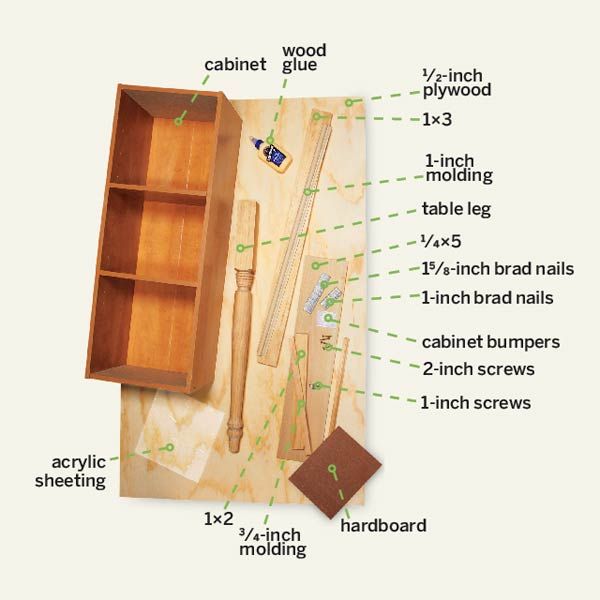
Half-inch plywood is plenty sturdy for our desktop, which is 27 by 48 inches. If you want a wider or deeper desk, opt for ¾-inch plywood, or affix stringers to the underside of the desktop to prevent sagging.
Cut List
- You can use the cut list below.
- Acrylic tabletop: 1 @ 27 by 48 inches. Cut on your line, rather than beside it, to the outside for a slightly easier fit within the molding.
- ½-inch plywood desktop: 1 @ 27 by 48 inches
- ½-inch plywood back: 1 @ 7 ¾ by 41 ½inches*
- ½-inch plywood sides: 2 @ 7 ¾ by 20 ½ inches*
- *Measurement may vary with leg style. To determine the height of the back and sides, measure the square post portion at the top of the leg.
- ½-inch plywood cubby sides: 2 @ 7 ¾ by 12 inches
- ½-inch plywood cubby top and bottom: 2 @ 12 by 13 inches
- 1×3 apron: 1 @ 27 ½ inches
- 1×2 cleat: 1 @ 41 ½ inches
- 1×2 cleat: 2 @ 20 ½ inches
- 1×2 cleat: 1 @ 27 ½ inches
- 1×2 cleat: 6 @ 6 ½ inches
- 1×2 cleat: 2 @ 1 ¾ inches
- 1×2 strip: 1 @ 14 inches
- Hutch shelves: 2 cut to size between the vertical dividers and depth of the hutch
- ¼x5 vertical dividers: 3 @ desired height; make them at least 4 ¼ inches tall to accommodate a standard envelope. Cut to the depth of the cabinet.
- Hardboard: 1 cut to the height and width of the cabinet.
Step 2: Cut the Parts
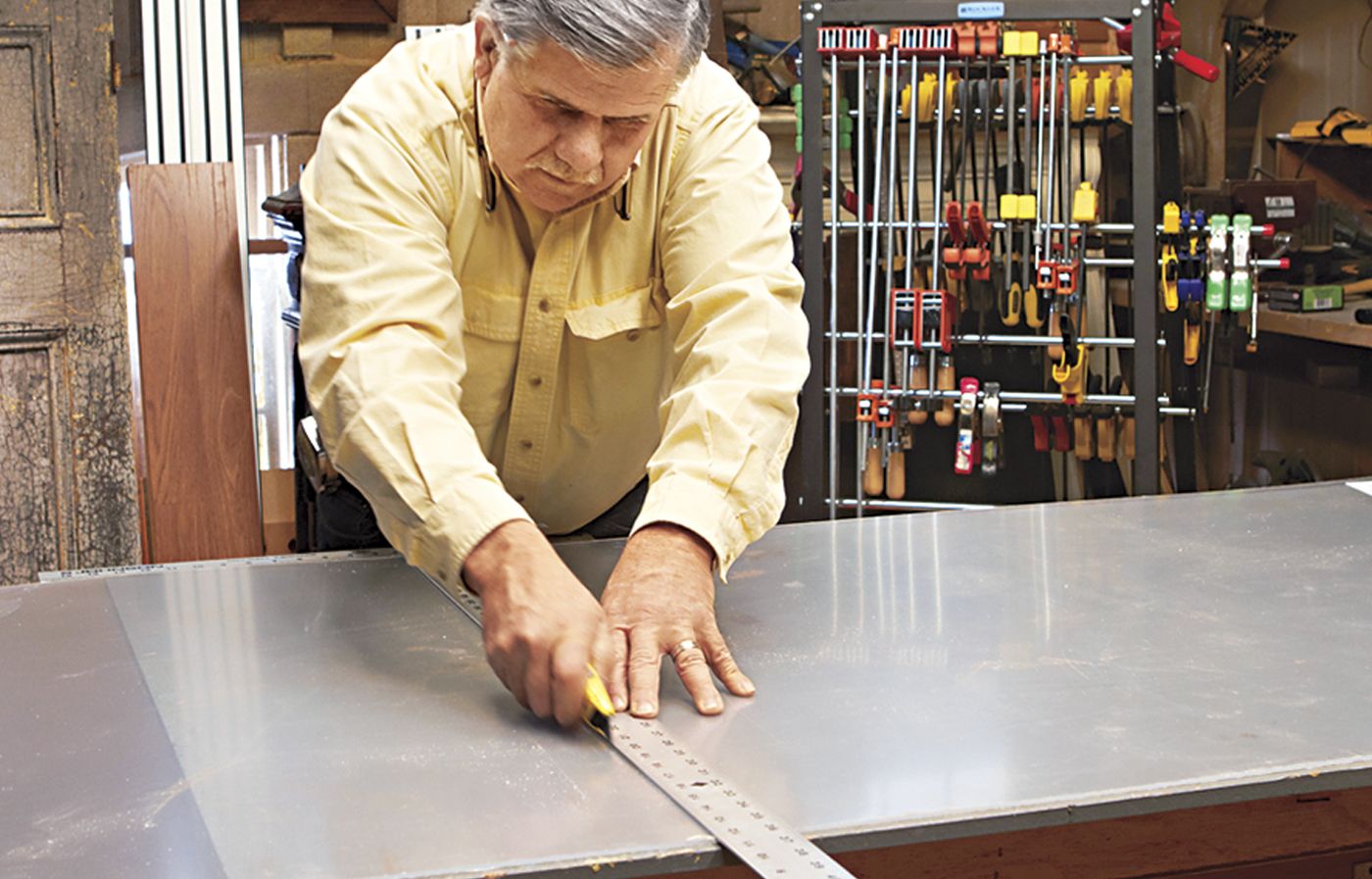
Cut the desktop, back, sides, 1×3 apron, 1×2 cleats, and cubby pieces to size. Cut the cabinet’s door into shelves for the hutch, as per the cut list. Use a utility knife and a straightedge to trim the acrylic top to size.
Step 3: Install the Cleats

Lay the back, side, and apron pieces flat. Set the cleats on edge and position them flush with the top and sides of the flat pieces, as shown. Secure the cleats with glue, followed by 1-inch nails through the plywood and into the cleats.
Step 4: Assemble the Cubby
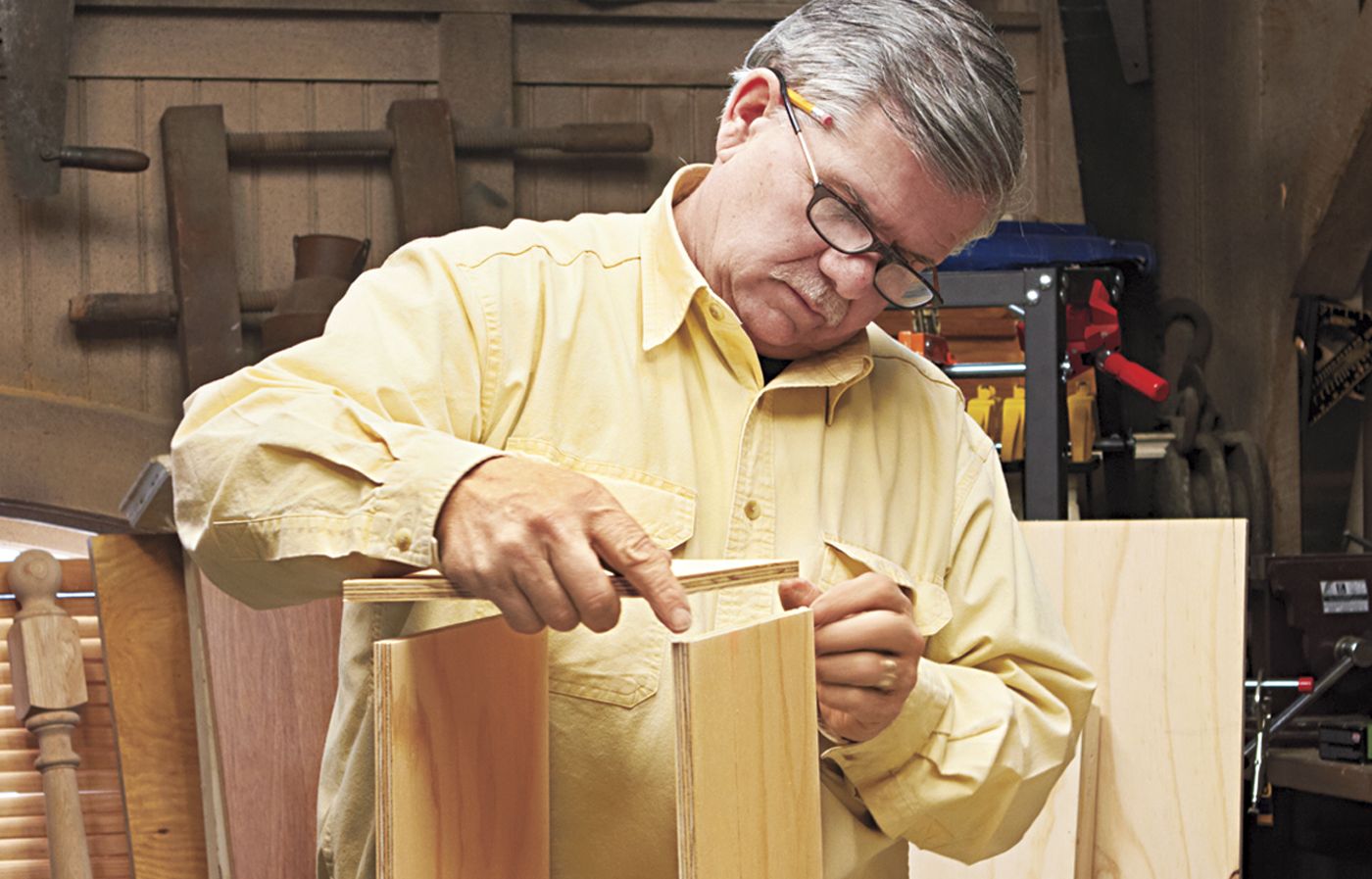
Glue and nail the cubby’s top and bottom pieces between the shorter side pieces. Nail a 1×2 strip across the back of the cubby, flush with its bottom edge, to keep contents from sliding out.
Step 5: Attach the Base
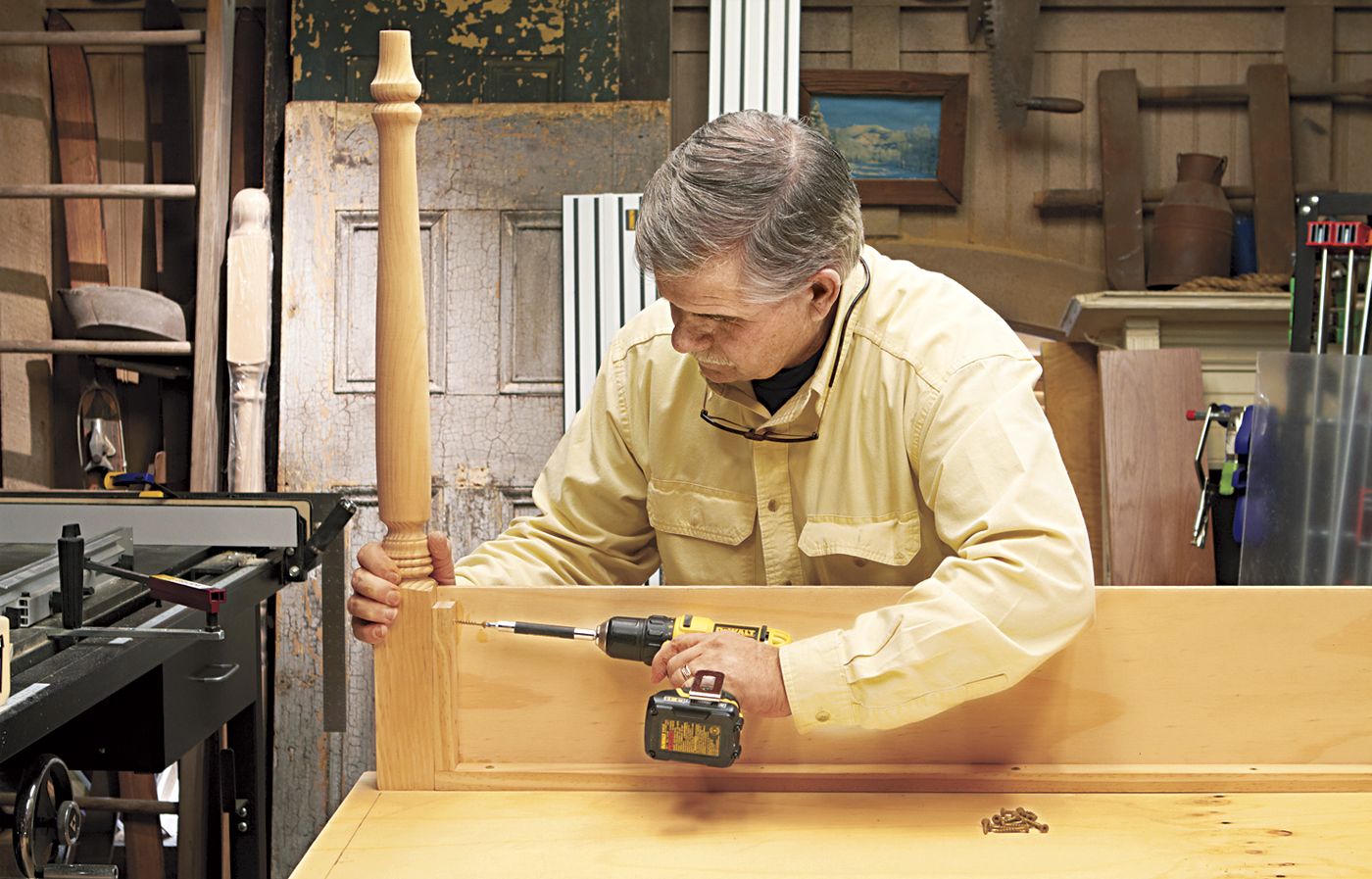
Position the legs 1 inch from each edge at the corners. Glue the back, sides, and apron in place, their cleats flush with the inner faces of the legs, as shown. Drive 1-inch screws through the cleats and into the desktop; use 2-inch screws to go through the cleats and into the legs.
Step 6: Attach the Cubby
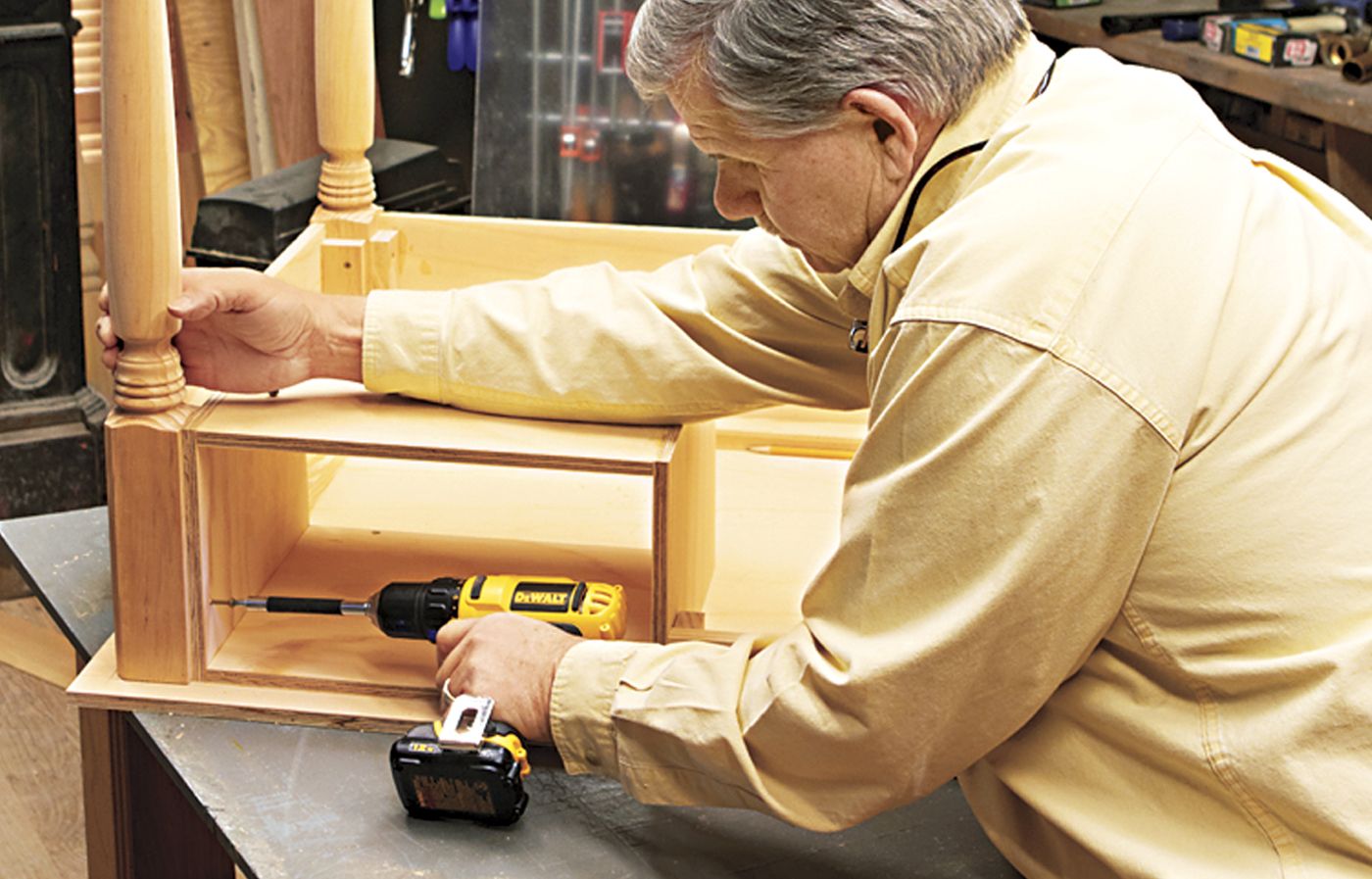
Glue the cubby to the underside of the desktop between the apron and the leg. Secure the cubby with 1-inch screws driven through its inner faces into the apron cleat and 2-inch screws into the leg. Turn the desk right-side up.
Step 7: Trim the Desktop
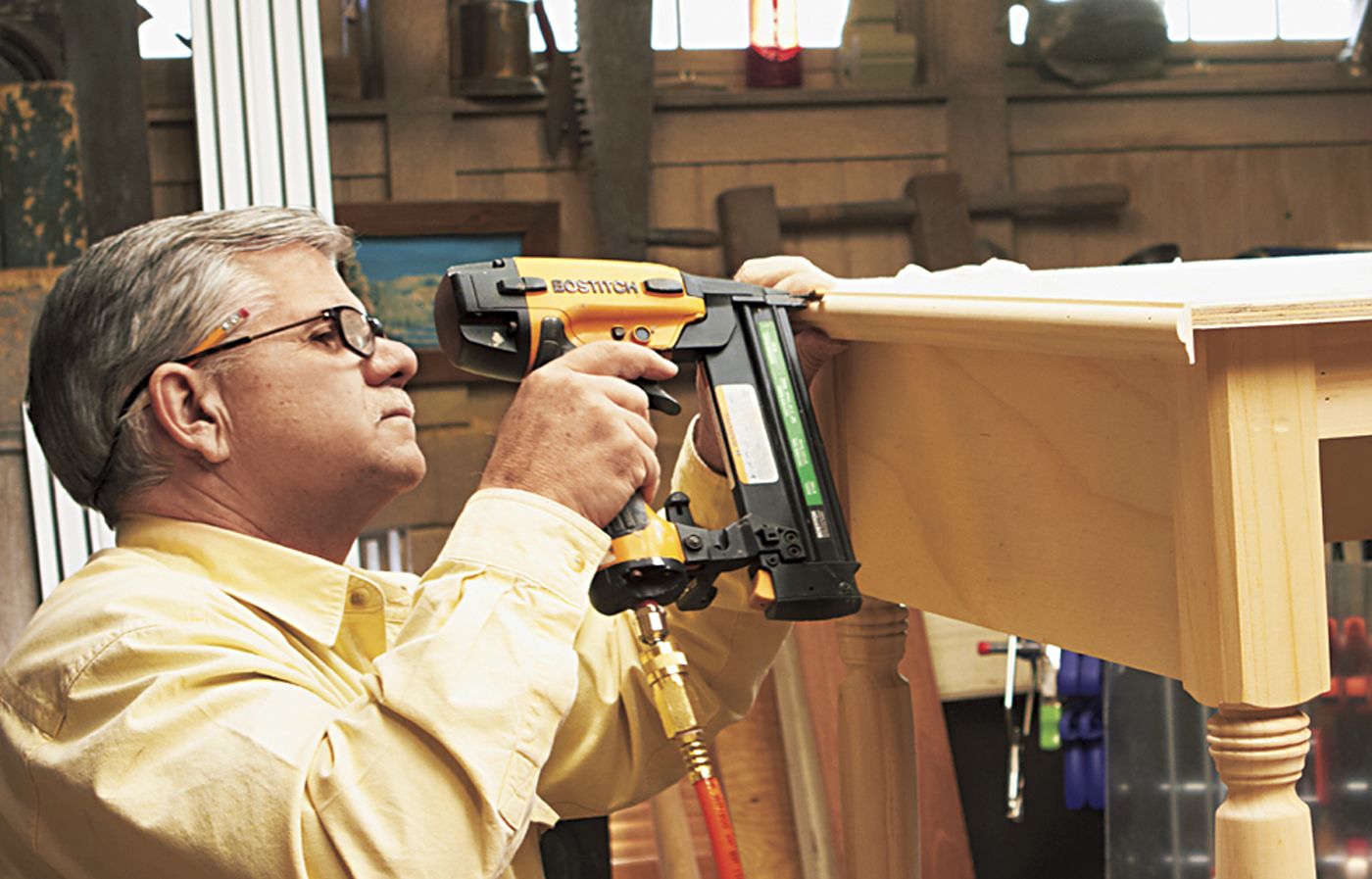
Cut molding to size, mitering the corners. Place the acrylic on the desktop, and position the molding so that its top edge is flush with the acrylic surface. Secure the molding to the desktop with 1⅝-inch nails spaced a few inches apart.
Step 8: Make the Hutch
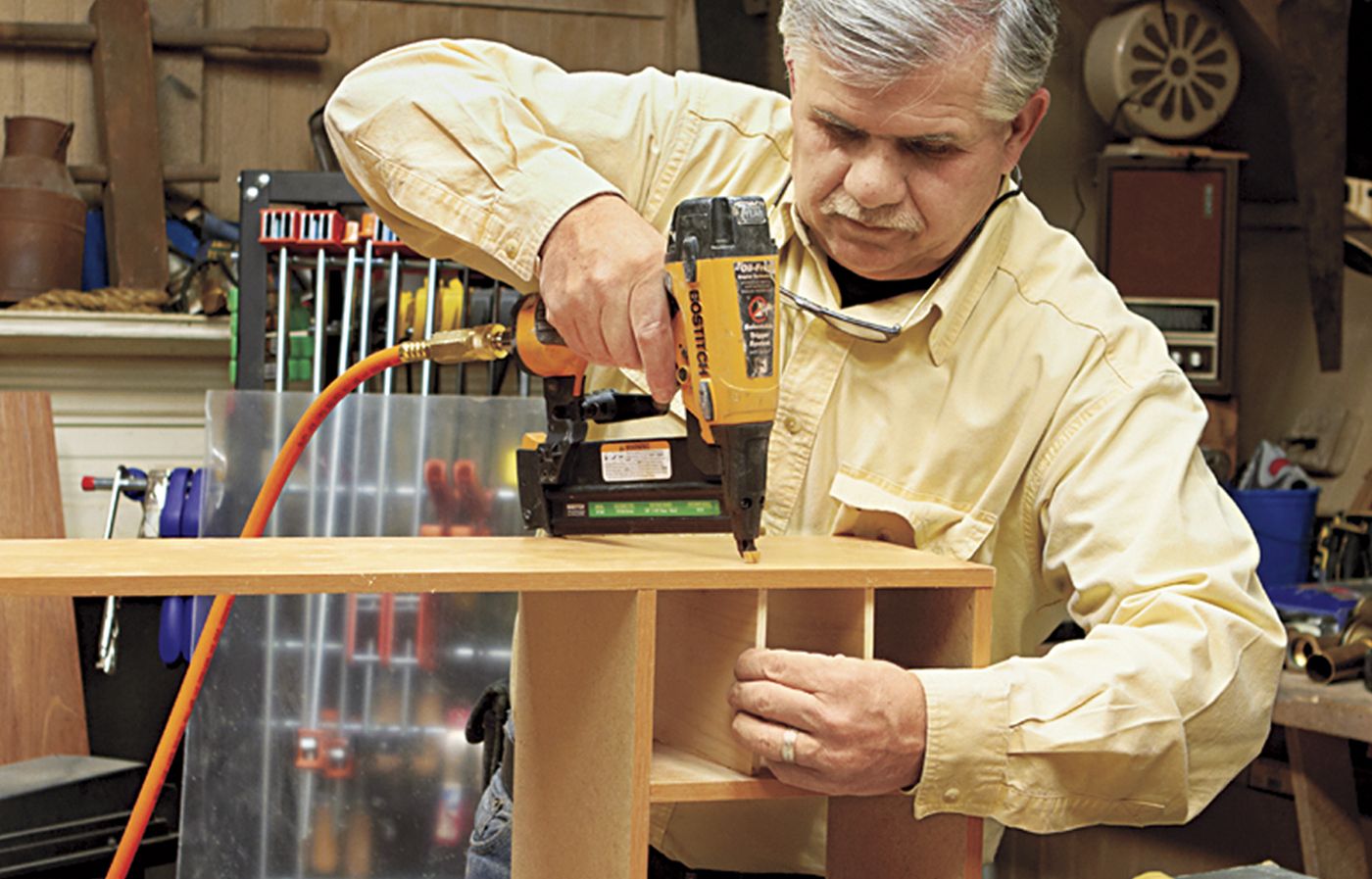
Turn the cabinet box on its side and nail through the top and bottom to secure its shelves as vertical dividers. Glue and nail shorter dividers to one horizontal shelf cut in Step 2. Nail it and the other shelf into place in the hutch.
Step 9: Trim the Hutch
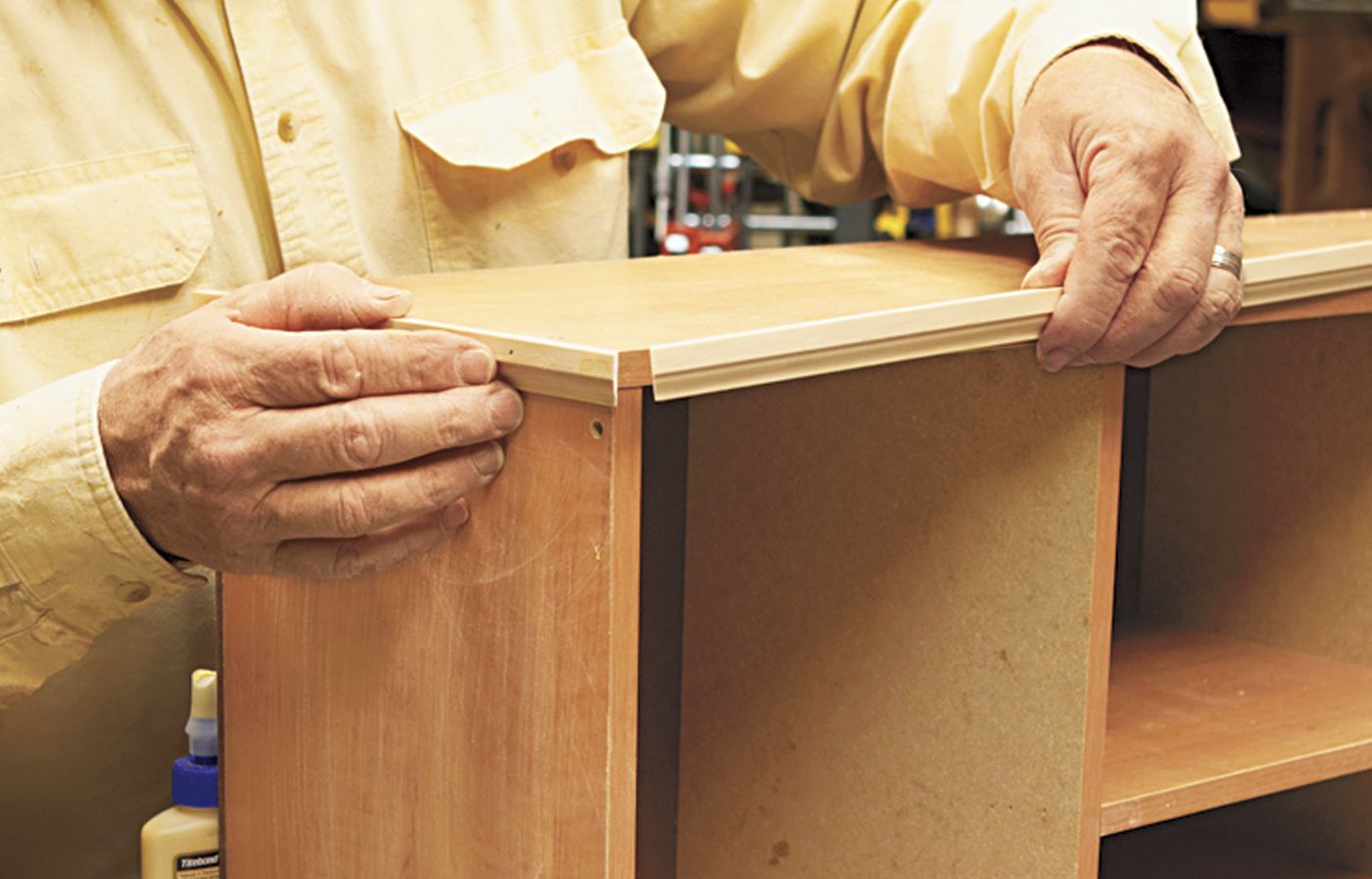
Cut trim to size, mitering the corners. Nail trim to the top and bottom edges of the hutch’s front and sides. Nail hardboard to the back of the hutch. Attach self-stick cabinet-door bumpers to the hutch’s underside before placing it on the desktop.
Customization Options for a Desk with a Storage Cubby
Once you’ve completed the basic construction of your desk, you can personalize it to match your style and needs.
Paint and Finish Ideas
Consider painting your desk to complement your room’s decor. For a classic look, you might choose a color like Valspar’s Cliveden Pasture, as suggested in the original design. Alternatively, you could opt for a natural wood finish by staining the desk to highlight the wood grain. Apply a clear protective coat over paint or stain to ensure durability.
Hardware Selection
Choosing the right hardware can significantly impact the overall look of your desk. Consider these options:
- Sleek metal pulls for a modern aesthetic
- Wooden knobs for a rustic touch
- Leather pulls for a unique, textured look
- Hidden push-to-open mechanisms for a minimalist design
Select hardware that complements your chosen paint or finish and matches your personal style.
Maintenance and Care for a Desk With a Storage Cubby
Proper maintenance will help your desk stay functional and attractive for years to come. Here’s our tips for properly maintaining it:
Cleaning Your Desk
Regular cleaning will keep your desk looking its best:
- Dust the surface and cubbies weekly with a soft, dry cloth
- For deeper cleaning, use a slightly damp cloth with mild soap, avoiding excess moisture
- Clean the acrylic top with a specialized acrylic cleaner to prevent scratches
- Vacuum or wipe out the cubbies periodically to remove dust and debris
Preserving the Finish
To maintain your desk’s appearance and protect its surface:
- Use coasters under drinks to prevent water rings
- Apply furniture wax every few months to protect the wood finish
- Touch up any chips or scratches in the paint promptly to prevent further damage
- Avoid placing hot items directly on the desk surface
Our Conclusion
Building a desk with storage cubbies is a rewarding DIY project that combines functionality with personal style. By following this guide, you can create a custom workspace that meets your specific needs and improves your productivity. The added storage features, such as the hutch and under-desk cubbies, give you a space to organize your belongings and maintain a clean, uncluttered look.
Tools
 Circular saw
Circular saw Miter saw
Miter saw Utility knife
Utility knife Straight edge
Straight edge Drill/driver
Drill/driver Brad nailer
Brad nailer







